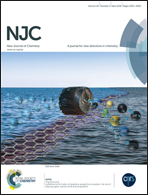Red lead degradation: monitoring of color change over time
Abstract
A specimen of Chinese ancient pigment dating from the Song Dynasty (A.D. 960–A.D. 1279) as well as artificially aged red lead specimens were examined by scanning electron microscopy, energy dispersive spectroscopy, X-ray photoelectron spectroscopy, X-ray diffraction, Raman spectroscopy and colorimetry. Aging tests simulating the weakly acidic environment of the Mogao Grottoes were performed to investigate the aging mechanism for the purpose of assessing the level of red lead degradation in cases where the red lead was not mixed with other pigments. Hydrogen ions from microbial metabolites and light were found to be the main deteriorating factors leading to red lead discoloration. The presence of hydrogen ions led to a disproportionation reaction of red lead, and light induced the oxidation of red lead to form lead dioxide. In addition, the chemical composition of the artificially aged red lead specimens was fitted as a function of aging time and chromatic values. Based on these functions, the mechanism and process of red lead discoloration could be visually described.


 Please wait while we load your content...
Please wait while we load your content...